[Republished from the WRGreens Blog “Survey Results – Candidates seeking Regional Chair position in WR“]
Cities and regions around the globe are taking the myriad threats of climate change VERY seriously, and many are taking active steps to ‘future proof’ their communities. We are already seeing the impacts in our own backyards – and we know that decisions will need to be made today to address tomorrow’s looming climate dangers. On behalf of Region residents and voters concerned with the devastating impacts of climate change felt right here in the Region of Waterloo and across our warming planet, we asked candidates seeking office in the Region of Waterloo to review and reply to a survey questions.
The answers from all 4 candidates ~ Jan d’Ailly • Jay Aissa • Karen Redman • Rob Deutschmann ~ seeking Regional Chair position follow:
Jan d’Ailly
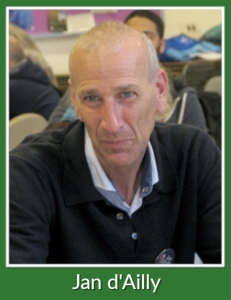 Q: First things first: do you support our goal of cutting local greenhouse gas emissions by 80% by 2050?
Q: First things first: do you support our goal of cutting local greenhouse gas emissions by 80% by 2050?
A: Yes, and I have proposed that all new construction/homes should have solar panels as part of our new official plan.
Q: Since transportation is the largest contributor to local greenhouse gas emissions, what do you think we should be doing to curb those emissions?
A: Encourage public transportation and active transportation.
Q: What potential issues do you see with public transit in the city/region, and how can we increase their likelihood for success?
A: It’s a classic chicken and egg situation, but the reality is that we need to properly fund public transit to ensure enough coverage to get good ridership. I can get you plan if you wish.
Q: What opportunities do you see with cycling infrastructure?
A: Huge, I was the person who initiated the Waterloop and the connectors trails in Waterloo around 2010, It was part of my election campaign at the time. We need to develop a region wide plan that can be adopted by all the cities and then prioritise the gaps and start filling them, just like we did in Waterloo.
Q: How do you and how would you balance economic considerations (which may be pressing in the short term) with environmental considerations (which threaten hundreds of thousands today and our species’ very existence in the too‐near future)?
A: Moving forward, everything that we do we must do on a more sustainable basis than we have been. Project by project, policy by policy.
Q: What is your position on our urban boundaries? Should we be continuing to build beyond the current boundaries?
A: I am a strong advocate of the hard country line, and see no reason why we should build beyond it. Its not sustainable. See answer above.
Q: What is your perspective on possible Greenbelt expansion into the Region’s boundaries?
A: Our Environmentally Sensitive Landscapes (ESLs)’s, which, by the way, I had an active hand in, provide far more protection than the greenbelt.
Q: How can we increase our Urban Canopy?
A: We need to continue to advocate about the importance of the canopy, and encourage tree planting. We can always do more.
Q: What ONE initiative ‐ that you may have experienced or seen through the media ‐ from around the world would you be interested in exploring in the Region?
A: Good question, actually it has to do with the provision of social services and making sure that no‐one gets left behind. We need to transform our social service delivery model to a much more collaborative eco‐system. See my comments from the CBC interviews.
Jay Aissa
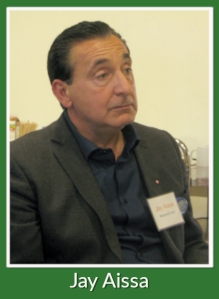 Q: First things first: do you support our goal of cutting local Greenhouse gas emissions by 80% by 2050?
Q: First things first: do you support our goal of cutting local Greenhouse gas emissions by 80% by 2050?
A: Your goal of cutting local Greenhouse gas emissions by 80% by 2050 is admirable. Yes, I support your goal, as it is consistent with the goals set by the Federal Government.
Q: Since transportation is the largest contributor to local greenhouse gas emissions, what do you think we should be doing to curb those emissions?
A: I think we should follow much of the plan as set out in the Region of Waterloo’s Master Plan. In the years to come, we must also look to alternative sources of energy to fuel our transportation systems.
Q: What potential issues do you see with public transit in the city/region, and how can we increase their likelihood for success?
A: To answer this question I would refer you to my website http://www.votejay.ca There you will see that I am calling for the creation of a new Master Transportation Plan for our Region. This plan calls for a comprehensive completion of the Light Rail Transit (LRT) which includes an operational Phase 1 in Waterloo and Kitchener and the completion of Phase 2 from Kitchener to Cambridge. Also included would be efficient and timely transportation services to each of the four Townships within the Region. Also included would be suitable walking and biking trails.
Q: What opportunities do you see with cycling infrastructure?
A: Again, I refer you to my website. I support the Region of Waterloo’s Separated Cycling Network Pilot Project.
Q: How do you and how would you balance economic considerations (which may be pressing in the short term) with environmental considerations (which threaten hundreds of thousands today and our species’ very existence in the too‐near future)?
A: It is every governments responsibility to do the greatest good, and we must find the balance between economic development and environmental considerations. When elected Regional Chair, my goal will be to find that balance.
Q: What is your position on our urban boundaries? Should we be continuing to build beyond the current boundaries?
A: I do not believe that we should build beyond current Regional boundaries.
Q: What is your perspective on possible Greenbelt expansion into the Region’s boundaries?
A: I do not believe that we should allow for possible Greenbelt expansion into Regional boundaries.
Q: How can we increase our Urban Canopy?
A: We should continue our Regional tree nursery program.
Q: What ONE initiative ‐ that you may have experienced or seen through the media ‐ from around the world would you be interested in exploring in the Region?
A: At this point in time, I believe that the Region of Waterloo has three priorities that we must pursue in the immediate term. First, I believe that we must do everything we can to ensure the creation of a new, high tech teaching hospital within our Region. Second, we must re‐think our transportation systems and create a new Master Transportation Plan. And third, we must provide more financial and personal support to our Region’s First Responders, and by that I mean our Police Force, our Fire Fighting Services, our Ambulance service and our EMTs, and others who are keeping us safe on a daily basis.
Karen Redman
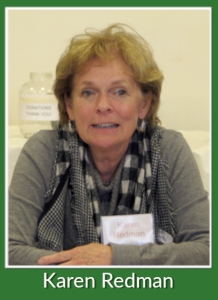 Q: First things first: do you support our goal of cutting local Greenhouse gas emissions by 80% by 2050?
Q: First things first: do you support our goal of cutting local Greenhouse gas emissions by 80% by 2050?
A: The Region has committed to 80% reduction of GHG by 2040.While I was Parliamentary Secretary for the Environment, I recognized that signing on to the Kyoto Protocol was an important step for Canada as a nation. At the same time, Hudson Quebec was banning pesticides in their city. Political leadership at all levels of government is required. But local municipalities have power to enact significant change. Municipal governments are the closest to the people. People in Waterloo Region started the blue box recycling program and have embraced the green bin for food waste with more enthusiasm than was predicted. The reduction of garbage in the land fill means a longer period of time before a new land fill site will need to be procured.
Q: Since transportation is the largest contributor to local greenhouse gas emissions, what do you think we should be doing to curb those emissions?
A: Complete phase 2 of the LRT to connect the Region to GO. Continue to lobby for 2 way all day GO trains, lobby for high speed rail linkages to GTA. Consider what are the lowest emission purchases for public transit when replacing vehicles.
Q: What potential issues do you see with public transit in the city/region, and how can we increase their likelihood for success?
A: When purchasing replacement vehicles, consider the least polluting options i.e electric vs diesel.
Q: What opportunities do you see with cycling infrastructure?
A: Cyclists don’t care if roads or trails are Regional, city or township. Uniform signage would be helpful and a seamless flow of bike lanes. The Active Transportation plan is comprehensive. It needs to be implemented and the progress monitored.
Q: How do you and how would you balance economic considerations (which may be pressing in the short term) with environmental considerations (which threaten hundreds of thousands today and our species’ very existence in the too‐near future)?
A: True leadership is knowing when to lead and when to step back to allow the community to provide the leadership. It is supporting initiatives like the REEP and Sustainable Waterloo Region. These are examples of leadership that have lead to a reduction in GHG emissions. Sustainable Waterloo Region is overseeing the construction of first energy neutral building in the David Johnston Research Park. Residential Energy Efficiency Program is empowering home owners to reduce their energy footprint while saving money. Again, the Region has committed to a 80% reduction in GHG emissions by 2040. I recognize that good environmental policy equates to good economic results for the Region. At a Provincial municipal conference, I saw a presentation on the potential cost savings over time and reduced impact on the environment through the use of electric rather than diesel buses. There is a cost to installing the infrastructure for fueling a fleet of these buses but phasing in major changes like these is prudent.
Q: What is your position on our urban boundaries? Should we be continuing to build beyond the current boundaries?
A: The balance between the rural and urban aspects of Waterloo Region has been largely maintained by land use planning that is managed through the Official Plan. Maintaining the country line to curb greenfield development and encourage intensification with in the urban core has protected our farms and the rural way of life. By growing food locally, marketing and processing it, there is less impact on the environment. The less distance our food is trucked, the less GHG emissions.
Q: What is your perspective on possible Greenbelt expansion into the Region’s boundaries?
A: Recently a challenge of the Regional Official plan was settled at the OMB. The settlement was a compromise. More land was zoned for future development than was originally proposed by the Region. However, it was less than the acreage the developers were seeking. Managed growth based on the values of protecting the rural/urban mix should be maintained. The construction of the LRT is as much a planning tool as a transportation system. Encouraging growth, both residential and commercial along the route, will alleviate the pressure to provide residential development on existing farm land.
Q: How can we increase our Urban Canopy?
A: Urban life is hard on mature trees. We were attracted to our neighborhood 36 years ago because of the trees. They are currently dying and new ones are being planted in their place. Attention to the amount of salt used on the roads can make a difference.
Q: What ONE initiative ‐ that you may have experienced or seen through the media ‐ from around the world would you be interested in exploring in the Region?
A: The fixed link high speed rail in China from Shanghai to the airport was truly impressive. A similar one from Waterloo Region to GTAA would be a game changer for the local airport and commuters. The 401 is reputedly the most traveled highway in Canada. Often it resembles a parking lot which is bad for our environment and bad for human health. Getting commuters off the 401 is good for the environment, good for the commuters traveling into the Region for work and those traveling from the Region to GTA. It makes economical sense locally, Regionally and Provincially.
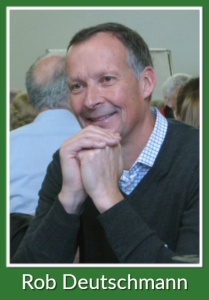
Q: First things first: do you support our goal of cutting local Greenhouse gas emissions by 80% by 2050?
A: Yes.
Q: Since transportation is the largest contributor to local greenhouse gas emissions, what do you think we should be doing to curb those emissions?
A: We need to continue to work on our transportation master plan to ensure that we improve alternative modes of transit. We need to have protected and connected cycling infrastructure within our community. We need to continue to invest in transit to expand the lines, buses and service hours to make it more attractive for more people and to better support the ION line. We need to continue to advocate with the provincial and federal governments for all day 2 way GO, high speed rail between Toronto and Waterloo Region, a GO connection between Milton and Cambridge, and expansion of a fully funded and route reviewed ION second phase. We also have to be mindful of what benefits will come from a driverless world, once that technology has improved to the point where it can be operated reliably. We also need to consider the implementation of technology, such as that from Miovision, to better move vehicles in our community.
Q: What potential issues do you see with public transit in the city/region, and how can we increase their likelihood for success?
A: As noted above, we need to invest in our infrastructure which includes expanded lines, increased hours of service and more buses. At the same time we have to review routes to ensure that we are operating as efficiently and effectively, in terms of customer service, as we can.
Q: What opportunities do you see with cycling infrastructure?
A: I am an advocate for building protected cycling paths and closing the gaps in our paths so we have better connectivity between bike paths. This also includes improved signage to make it easier to navigate our bike paths.
Q: How do you and how would you balance economic considerations (which may be pressing in the short term) with environmental considerations (which threaten hundreds of thousands today and our species’ very existence in the too‐near future)?
A: Everything we do as a government has to be viewed through various “lenses” – economic, social and environmental. We are past the point in our existence on this planet where we can ignore the environment and assume that either things aren’t that bad or that things will fix themselves. That is an ostrich mentality that I do not agree with.
Q: What is your position on our urban boundaries? Should we be continuing to build beyond the current boundaries?
A: I was a member of Regional Council from 2010 to 2014. During that time we were dealing with the OMB dispute between the Region and builders over the additional number of hectares for future development. Eventually the parties were able to come to a mediated settlement after the Region lost the OMB hearing that sided with the developers for an additional 1,000 hectares for development in the official plan. The number was reduced to just under 500 hectares, which should provide developers with sufficient expansion lands for many years to come. In the meantime we will continue our intensification strategy that promotes building up rather than building out.
Q: What is your perspective on possible Greenbelt expansion into the Region’s boundaries?
A: The Region has always been a leader in protection of our country side lands. We will continue to lobby the government to allow us to decide what is in the best interests of our community and not fall under provincial determination. As we saw in the last provincial election, if our lands are under provincial protection, that protection can be changed with a change in government that has a different philosophy than the previous government. My preference is that we determine our own destiny as a Region rather than have those decisions transferred to bureaucrats at Queen’s Park with little or no connection to our community.
Q: How can we increase our Urban Canopy?
A: We must always be mindful of the impact of any development to the urban greenspace and trees. We need to ensure that we protect as much of our urban canopy as possible. In the event that there will be removal of trees for a development project, for example, then we need to ensure that there is a fulsome and robust plan in place to ensure that there is a proposal in place to provide us with, at a minimum, an equivalent replacement. I also prefer that green space is included in development projects where required rather than accept cash in lieu of greenspace.
Q: What ONE initiative ‐ that you may have experienced or seen through the media ‐ from around the world would you be interested in exploring in the Region?
A: I was in Vancouver over the summer and I was really impressed with their cycling infrastructure. They had protected bike lanes and there were connections to Stanley Park. We need to up our game in Waterloo Region with respect to cycling infrastructure – protected and connected is my mantra.
Download the survey answers as a Microsoft PDF chart here: https://www.d1zi.com/assets/D1Zi-Survey-10-17-2018-revised.pdf

Don’t forget to get out and vote for your municipal representatives on Monday, October 22nd, 2018!
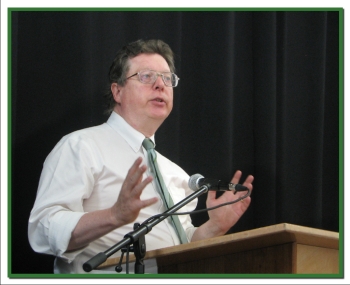 We have no choice but to elect more Green MPs to send to Parliament to ensure that we have a Parliament prepared to meet Climate Change head on.
We have no choice but to elect more Green MPs to send to Parliament to ensure that we have a Parliament prepared to meet Climate Change head on.



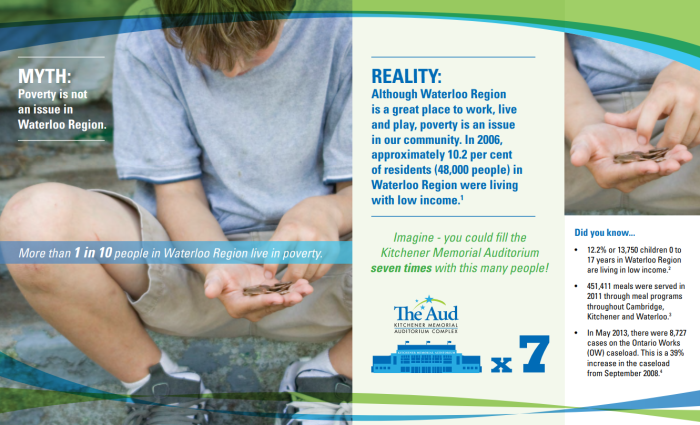






 –
–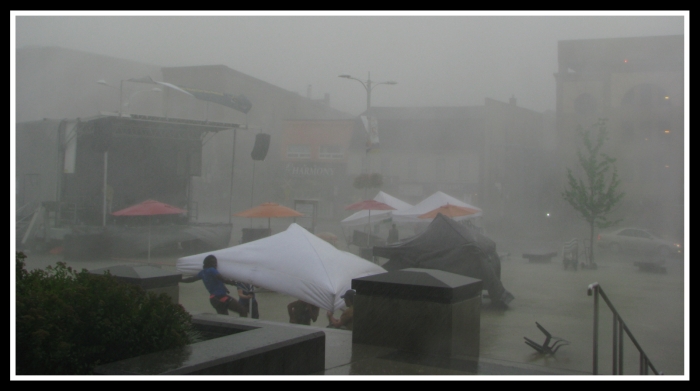






 Even so, it still is not enough.
Even so, it still is not enough.



